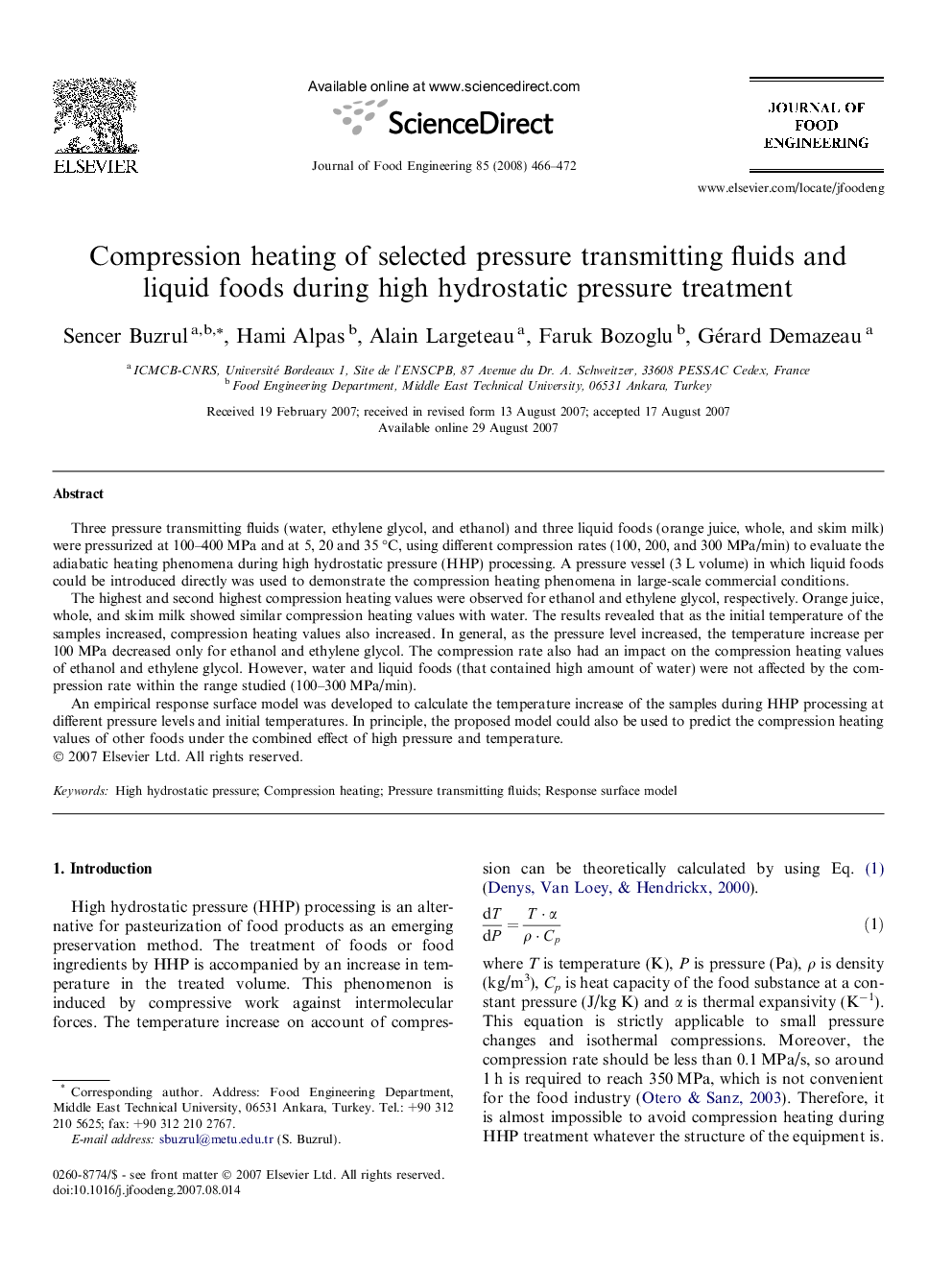| Article ID | Journal | Published Year | Pages | File Type |
|---|---|---|---|---|
| 225459 | Journal of Food Engineering | 2008 | 7 Pages |
Three pressure transmitting fluids (water, ethylene glycol, and ethanol) and three liquid foods (orange juice, whole, and skim milk) were pressurized at 100–400 MPa and at 5, 20 and 35 °C, using different compression rates (100, 200, and 300 MPa/min) to evaluate the adiabatic heating phenomena during high hydrostatic pressure (HHP) processing. A pressure vessel (3 L volume) in which liquid foods could be introduced directly was used to demonstrate the compression heating phenomena in large-scale commercial conditions.The highest and second highest compression heating values were observed for ethanol and ethylene glycol, respectively. Orange juice, whole, and skim milk showed similar compression heating values with water. The results revealed that as the initial temperature of the samples increased, compression heating values also increased. In general, as the pressure level increased, the temperature increase per 100 MPa decreased only for ethanol and ethylene glycol. The compression rate also had an impact on the compression heating values of ethanol and ethylene glycol. However, water and liquid foods (that contained high amount of water) were not affected by the compression rate within the range studied (100–300 MPa/min).An empirical response surface model was developed to calculate the temperature increase of the samples during HHP processing at different pressure levels and initial temperatures. In principle, the proposed model could also be used to predict the compression heating values of other foods under the combined effect of high pressure and temperature.
